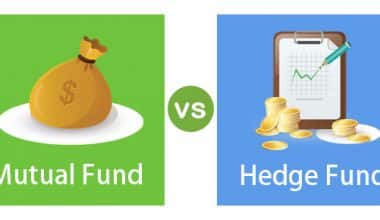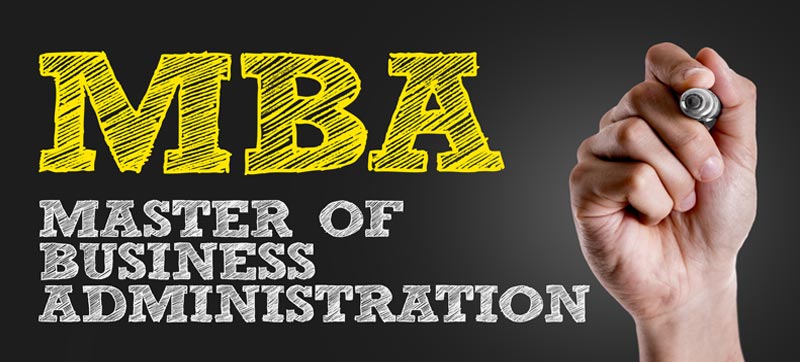In general, investors look for companies with a low equity multiplier because it indicates that the company is financing asset purchases with more equity and less debt. Companies with a high debt load may be financially risky. This is especially true if the company begins to struggle to generate the cash flow from operating activities (CFO) required to repay the debt and the associated servicing costs, such as interest and fees. So read on to learn about how to calculate the equity multiplier and the formula.
What is the Equity Multiplier (EM)?
The Equity Multiplier is a key financial metric that measures a company’s level of debt financing. In other words, it is the ratio of ‘Total Assets’ to ‘Shareholder’s Equity. If the equity multiplier is 5, it means that the investment in total assets is 5 times the investment by equity shareholders. In contrast, it means that in total asset financing, 1 part is equity and 4 parts are debt.
The Equity Formula
The equity multiplier formula is as follows:
Total Assets / Common Shareholder’s Equity = Equity Multiplier
In this case,
- Total Assets: Total assets refer to all of the company’s assets or the total asset side of a company’s balance sheet. On the liability side, a total of all liabilities and equity capital are covered to arrive at the total assets figure.
- Common Shareholder’s Equity: It refers solely to the assets of the common shareholder. Note that preference shares are not part of this. So the reason for not including the preference share is that it is a fixed commitment.
How to Calculate Equity Multiplier
Let’s look at an example to better understand how to calculate the equity multiplier:
Assume,
- A company’s total assets are equal to $100 million.
- Equity of Common Shareholders = $ 20 Million
- Preferred Share = ten million dollars
The equity multiplier formula is as follows:
Total Assets / Common Shareholder’s Equity = 100 / 20 = 5.
We get a multiplier of five. Simply put, total assets are five times total shareholder equity.
Analysis and Interpretation
Running a business necessitates the purchase of assets. So you can do it in two ways: with debt or with equity. A 5 times ratio indicates that total assets are 5 times that of equity. In other words, one-fifth of assets are funded by equity, while the remaining four-fifths are financed by debt. In percentage terms, 20% (1/5) is equity-financed, while 80% (4/5) is debt-financed.
Also, our minds are constantly inquisitive about categorizing anything as good or bad. But, before we get into whether the multiple of 5 is good or poor, it is important to understand that the comparison is possible with two items – ‘Industry Standards’ and ‘Own Past Multiple’.
Industry Requirement
If the multiple is greater than that of the company’s rivals in the market, it is fair to assume that the company has greater leverage.
Possess Past Multiples
Comparing our multiple to our previous multiples will only provide us with a pattern. If the trend continues, it can be a worrying situation for finance managers because as debt proportions rise, further debt borrowing becomes more difficult. So if adequate profitability does not follow the increase and efficient asset utilization, the business will face financial distress.
Using the Equity Multiplier to Calculate the Debt Ratio
We can also use the debt ratio and equity multiplier to calculate a company’s debt amount. Companies fund their investments with debt and equity, which serve as the basis for both formulas. Total Capital is equal to the amount of total debt and total equity.
The debt ratio is the percentage of a company’s assets that are funded by debt. We can measure it in the following manner using the equity multiplier formula:
Total Debt / Total Assets = Debt Ratio
Using ABC Company as an example, we can calculate the debt ratio as follows:
Debt Ratio = 200,000/1,000,000 = 0.2, or 20%
We may also use the equity multiplier to calculate a company’s debt level using the following formula:
Debt to Equity Ratio = 1 – (1/Equity Multiplier)
Debt Ratio = 1 – (1/1.25) = 1 – (0.8) = 0.2, or 20%
Analysis of DuPont
DuPont Analysis is a financial evaluation tool developed by DuPont Corporation for internal examination purposes. It was developed in the 1920s by the management at DuPont Corporation for a quantitative assessment of the company’s profitability. The DuPont model divides return on equity (ROE) into three components: net profit margin, asset turnover, and equity multiplier. So ROE is a measure of a company’s net income earned for its shareholders. As the value of the ROE increases over time, DuPont analysis determines how much of the adjustment is due to financial leverage. Also, any changes in the equity multiplier’s value result in changes in the value of ROE. The ROE formula looks like this:
ROE = Net Profit Margin x Turnover of Total Assets x Financial Leverage Ratio
or
ROE = [Net Income / Sales] x [Sales / Average Total Assets] x [Average Total Assets / Average Shareholder’s Equity] x [Average Total Assets / Average Shareholder’s Equity]
The Relation Between ROE and EM
There is a clear relationship between ROE and the equity multiplier in the formula above. Any rise in the value of the equity multiplier raises the ROE. A high equity multiplier indicates that the company gets more leverage in its capital structure while having a lower total cost of capital.
Equity Multiplier Benefits and Drawbacks
Both higher and lower EM may have advantages and disadvantages.
Greater EM
The following issues can arise as a result of a high debt proportion in the capital structure:
- Higher debt levels indicate a higher risk of insolvency. If earnings fall in any conditions, the likelihood of failing to fulfill financial and other commitments rises.
- Since the debt is already heavily leveraged, borrowing more debt becomes difficult.
Reduced EM
Lower EM, on the other hand, can indicate inefficiency in creating value for shareholders through tax benefits due to leverage.
The Ideal EM
There can’t be a perfect equity multiplier. It should be a part of the company’s overall plan. This can vary greatly depending on the industry and other factors such as debt availability, project size, and so on.
Issues with the Equity Multiplier Metric
Certain issues can taint the use of the equity multiplier for research. Hence, one should take precautionary steps.
Depreciation is increased
As a result, total assets display a lower number, and the metric is distorted.
Working Capital Deficit
Since the concept of debt in this context encompasses all liabilities, including payables. As a result, in the case of negative working capital, there are assets that are funded by capital that has no expense. The general interpretations fail here.
Profitable Finance
Highly profitable businesses may not pay out large dividends to shareholders and may use profits to finance the majority of their assets. So the metric has no value.
Seasonal Enterprise
Seasonal businesses usually do the majority of their business in one quarter of the year, say Q1. Therefore, equity multipliers for the first and third quarters would produce different results for the metric.
An Example of a Multiplier of Equity
Assume ABC has $10 million in net assets and $2 million in stockholders’ equity. It has a 5 equity multiplier ($10 million $2 million). This suggests the company ABC uses equity to fund 20% of its assets and debt to finance the remaining 80%.
Business DEF, which is in the same industry as company ABC, on the other hand, has total assets of $20 million and stockholders’ equity of $10 million. It has a 2 equity multiplier ($20 million x $10 million). This suggests that the company DEF uses equity to fund half of its assets and debt to fund the other half.
Business ABC has a higher equity multiplier than company DEF, meaning that ABC uses more leverage to fund asset acquisitions. A lower equity multiplier is preferable because it means that the business is incurring less debt to acquire properties. In this situation, one will prefer company DEF over company ABC because it owes less money and therefore carries less risk.
What is the difference between the equity multiplier and the debt-to-equity ratio?
The equity multiplier measures a company’s total leverage, while the debt-to-equity ratio measures the proportion of debt to equity used to finance a company’s operations.
How does the equity multiplier compare to other financial ratios?
The equity multiplier should be compared to other financial ratios, such as the debt-to-equity ratio, return on equity, and interest coverage ratio, to gain a comprehensive understanding of a company’s financial situation.
How does the equity multiplier vary by industry?
The equity multiplier can vary widely by industry, depending on factors such as the level of competition, regulation, and capital requirements.
How does the equity multiplier change over time for a company?
The equity multiplier can change over time for a company, depending on factors such as its growth rate, debt financing, and asset management.
What is the historical average equity multiplier for companies?
The historical average equity multiplier for companies varies depending on the industry, but it is typically between 1 and 2.
How can a company improve its equity multiplier?
A company can improve its equity multiplier by reducing its debt, increasing its equity, or both.
What are the limitations of the equity multiplier?
The equity multiplier is a useful tool for understanding a company’s leverage, but it has several limitations, including that it does not take into account the quality or risk of a company’s assets, or the terms and conditions of its debt.
How does the equity multiplier impact a company’s ability to raise capital?
A high equity multiplier can impact a company’s ability to raise capital, as lenders and investors may view it as a sign of higher risk and be less likely to provide funding.
Special Considerations
A high equity multiplier does not necessarily imply a higher investment risk for certain firms. So heavy use of debt may be part of a successful investment plan that helps the company to buy assets at a lower cost. This is the case if the corporation determines that incurring debt as a funding option is less expensive than issuing stock.
If the company has used its assets wisely and is making a profit that is sufficient to repay its debt, then incurring debt may be a good strategy. This approach, however, exposes the company to the possibility of an unforeseen decrease in earnings, which may make it difficult to repay its debt.
Furthermore, a low equity multiplier is not always a good sign for a firm. In certain situations, it can indicate that the company has been unable to find lenders willing to lend it money.
Equity Multiplier FAQs
Is a high equity multiplier good or bad?
Investopedia: It is better to have a low equity multiplier because a company uses less debt to finance its assets. The higher a company’s equity multiplier, the higher its debt ratio (liabilities to assets), since the debt ratio is one minus the inverse of the equity multiplier
What does equity multiplier tell us?
The equity multiplier is a risk indicator that measures the portion of a company’s assets that is financed by stockholder’s equity rather than by debt. … Generally, a high equity multiplier indicates that a company is using a high amount of debt to finance assets.
What is a stock multiplier?
The earnings multiplier frames a company’s current stock price in terms of the company’s earnings per share (EPS) of stock. … The earnings multiplier can help investors determine how expensive the current price of a stock is relative to the company’s earnings per share of that stock.
How can the equity multiplier ratio be improved?
A company can improve its return on equity in a number of ways, but here are the five most common.
- Use more financial leverage. Companies can finance themselves with debt and equity capital. …
- Increase profit margins. …
- Improve asset turnover. …
- Distribute idle cash. …
- Lower taxes
- Cash Ratio: Formula, Calculations & Examples
- Prestige Pricing: Overview, Examples, Strategy (+ Free Tips)
- Financial Instruments: Definition, Types, and Examples






